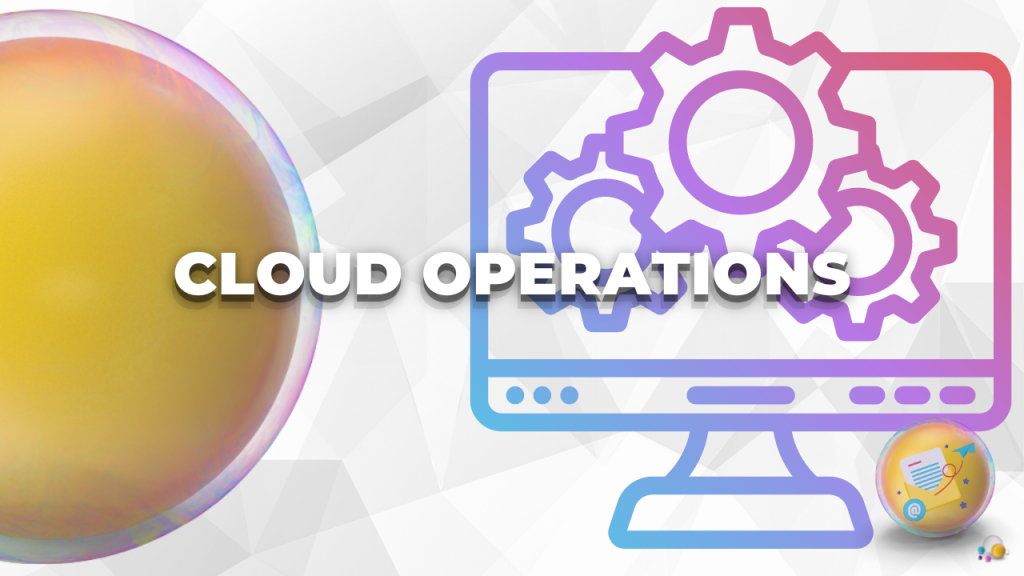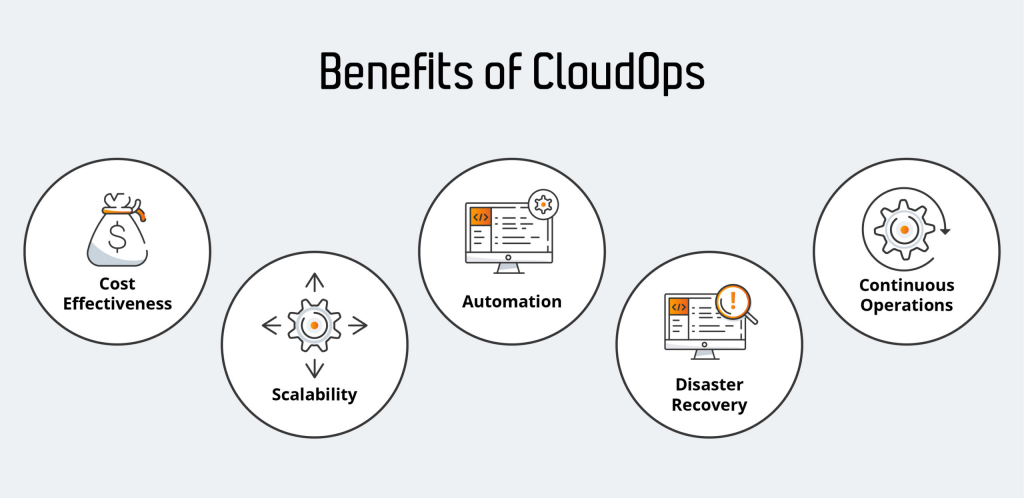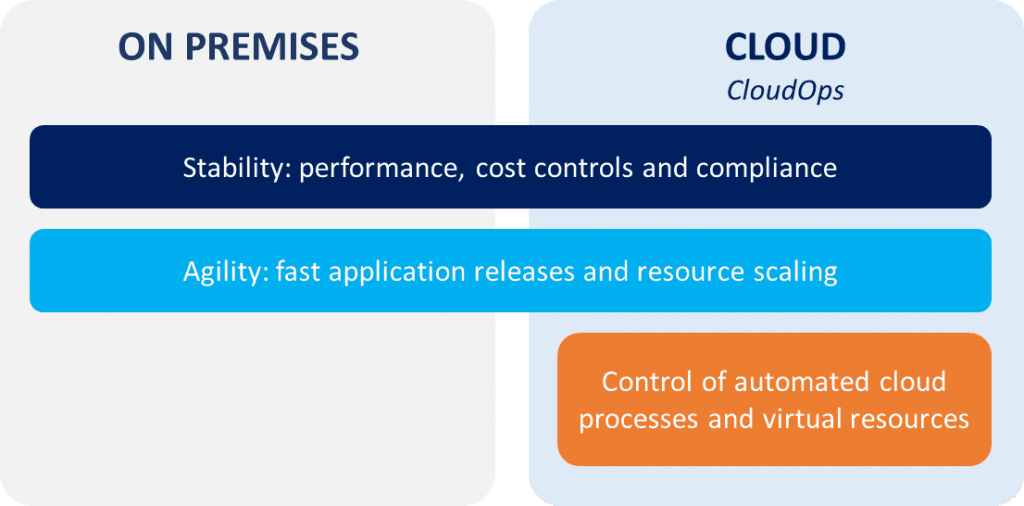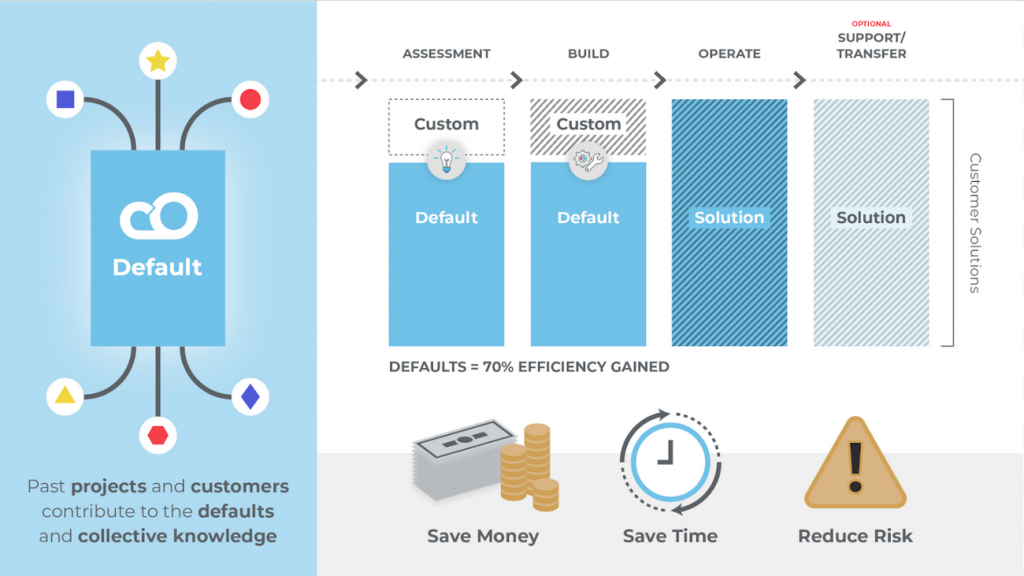
CloudOps, short for Cloud Operations, refers to the set of practices, processes, and tools used to manage and optimize the operation of cloud infrastructure and services. It encompasses the ongoing tasks and responsibilities related to deploying, monitoring, maintaining, securing, and optimizing applications and resources in a cloud environment. CloudOps is essential for organizations that leverage cloud computing to ensure the efficiency, availability, security, and cost-effectiveness of their cloud-based applications and services.

Why We need CloudOps?
- Infrastructure Management: CloudOps involves managing and provisioning cloud resources, such as virtual machines, storage, databases, and networking components. This includes tasks like configuring infrastructure as code, scaling resources up or down, and managing resource lifecycles.
- Application Deployment: CloudOps teams are responsible for deploying applications and services in the cloud. This includes setting up environments, automating deployment pipelines (often through CI/CD), and ensuring that applications are available and performant.
- Monitoring and Alerting: Continuous monitoring of cloud resources and applications is vital for detecting issues, identifying performance bottlenecks, and ensuring high availability. CloudOps teams set up monitoring tools and establish alerting mechanisms to respond to anomalies promptly.
- Security and Compliance: Security is a top priority in CloudOps. Teams implement security best practices, configure access controls, encryption, and perform vulnerability assessments to protect data and applications. Compliance with industry standards and regulations is also a critical aspect.
- Cost Management: Cloud resources come with associated costs. CloudOps teams track resource usage, optimize configurations, and implement cost-control measures to avoid unexpected expenses and ensure cost-effectiveness.
- Scalability and Performance Optimization: Cloud environments provide scalability, but it’s essential to optimize resource usage to achieve cost-efficiency. CloudOps teams optimize application performance, fine-tune configurations, and ensure resources are provisioned as needed.
- Automation: Automation is a core principle of CloudOps. It involves automating repetitive tasks, such as resource provisioning, scaling, and application deployments, to reduce manual effort and minimize the risk of human errors.
- Disaster Recovery and Business Continuity: CloudOps includes planning and implementing disaster recovery and business continuity strategies to ensure data resilience and minimize downtime in case of outages or disasters.
- Collaboration: Effective collaboration between development and operations teams (DevOps) is crucial in CloudOps. This collaboration ensures that applications are designed for scalability, reliability, and ease of management in the cloud.
- Elasticity: CloudOps leverages the elasticity of cloud resources to respond to changing workloads. Resources can be automatically scaled up or down based on demand, ensuring optimal performance and cost efficiency.
- Innovation and Agility: CloudOps enables organizations to innovate and experiment more rapidly. Teams can quickly spin up new environments, test new features, and adapt to changing market conditions.
- Global Reach: Cloud services provide global data centers, enabling organizations to reach a global audience more easily. CloudOps teams can leverage these capabilities to expand their market presence.
CloudOps is essential for organizations leveraging cloud computing because it ensures that cloud resources are managed efficiently, securely, and cost-effectively. It enables organizations to focus on their core business objectives while leveraging the scalability, flexibility, and innovation opportunities offered by the cloud. By implementing effective CloudOps practices, organizations can maximize the benefits of cloud computing while minimizing potential challenges and risks.
What is the Advantage of CloudOps?

- Scalability: CloudOps allows organizations to easily scale their resources up or down based on demand. This elasticity ensures that applications can handle varying workloads efficiently, without overprovisioning or wasting resources.
- Cost Efficiency: Efficient resource management and cost optimization are central to CloudOps. It helps organizations monitor and control cloud costs, reducing the risk of overspending and allowing for better financial planning.
- Flexibility and Agility: CloudOps enables organizations to quickly adapt to changing business requirements and market conditions. It empowers teams to experiment, innovate, and deploy new features and services rapidly.
- High Availability: CloudOps practices, such as redundancy, failover, and disaster recovery planning, contribute to high availability. Cloud providers offer multiple availability zones and regions, reducing the risk of downtime due to hardware failures or disasters.
- Global Reach: Cloud providers have data centers in multiple geographic regions. CloudOps allows organizations to distribute their applications globally, ensuring low latency and improved user experiences for a global audience.
- Security: Cloud providers offer robust security features, and CloudOps teams implement security best practices to protect data and applications. This includes access control, encryption, and continuous monitoring for threats.
- Automation: Automation is a key feature of CloudOps. It reduces manual effort, minimizes human errors, and enables consistent and repeatable processes for provisioning, scaling, and managing resources.
- DevOps Integration: CloudOps works hand in hand with DevOps practices, fostering collaboration between development and operations teams. This integration accelerates development and deployment while maintaining reliability.
- Monitoring and Alerting: CloudOps teams use monitoring tools to gain insights into the performance and health of cloud resources and applications. Automated alerting ensures quick responses to anomalies.
- Compliance: CloudOps includes compliance management to meet industry standards and regulations. This is critical for organizations in sectors like healthcare, finance, and government.
- Disaster Recovery: CloudOps plans and implements disaster recovery strategies, leveraging cloud services’ capabilities for data replication and backup to ensure business continuity.
- Resource Optimization: Continuous resource optimization helps organizations get the most value from their cloud investments by right-sizing resources, eliminating unused capacity, and optimizing configurations.
- Self-Service: Many CloudOps practices allow self-service resource provisioning for development and testing teams, reducing dependency on IT operations.
What is the feature of CloudOps?
- Infrastructure as Code (IaC): IaC enables the automated provisioning and management of infrastructure resources using code, promoting consistency and repeatability.
- Continuous Integration and Continuous Delivery (CI/CD): CI/CD pipelines automate application deployment, testing, and delivery, reducing manual intervention and accelerating development cycles.
- Containerization: Container technologies like Docker enable consistent packaging and deployment of applications across different environments.
- Orchestration: Orchestration tools like Kubernetes manage the deployment, scaling, and operation of containerized applications.
- Serverless Computing: Serverless platforms abstract infrastructure management, allowing developers to focus on writing code without worrying about servers.
- Auto Scaling: Auto scaling automatically adjusts resource capacity based on workload demands, ensuring optimal performance and cost efficiency.
- Identity and Access Management (IAM): IAM features control user and application access to cloud resources, ensuring security and compliance.
- Monitoring and Logging: CloudOps leverages monitoring and logging services to gain insights into resource and application performance, troubleshoot issues, and meet compliance requirements.
- Cost Management Tools: Cloud cost management tools help organizations track and optimize cloud spending.
- Security Services: Cloud providers offer a range of security services and features, including firewalls, encryption, and identity management.
- Service Catalogs: Service catalogs allow organizations to define and offer standardized cloud services and resources to their teams.
- API Integration: Integration with cloud provider APIs enables automation and management of cloud resources programmatically.
CloudOps offers several advantages, including scalability, cost efficiency, flexibility, and high availability. Key features of CloudOps include automation, monitoring, security, and resource optimization, which enable organizations to harness the full potential of cloud computing while meeting their operational and business needs.
What is the Top 10 Use cases of CloudOps?

The top 10 use cases of CloudOps are:
- Deploying and managing applications. CloudOps can be used to deploy and manage applications in the cloud. This can help organizations to save time and money, and to improve the agility and scalability of their applications.
- Automating IT operations. CloudOps can be used to automate IT operations tasks, such as provisioning, configuration, and monitoring. This can help to improve efficiency and reduce errors.
- Securing cloud environments. CloudOps can be used to secure cloud environments by implementing security best practices and automating security checks. This can help to protect data and systems from cyberattacks.
- Optimizing cloud costs. CloudOps can be used to optimize cloud costs by managing costs and identifying areas of waste. This can help organizations to save money on their cloud investments.
- Monitoring cloud performance. CloudOps can be used to monitor cloud performance by collecting and analyzing data. This can help organizations to identify and resolve performance issues.
- Scaling cloud resources. CloudOps can be used to scale cloud resources up or down as needed. This can help organizations to meet changing demands without having to overprovision resources.
- Migrating to the cloud. CloudOps can be used to migrate applications and data to the cloud. This can help organizations to take advantage of the benefits of cloud computing.
- Managing hybrid cloud environments. CloudOps can be used to manage hybrid cloud environments, which are environments that use a combination of on-premises and cloud resources. This can help organizations to get the best of both worlds.
- Compliance with regulations. CloudOps can be used to help organizations comply with regulations by automating compliance checks and providing visibility into compliance status.
- Improving disaster recovery and business continuity. CloudOps can be used to improve disaster recovery and business continuity by automating disaster recovery plans and providing visibility into the status of systems and data.
How to Implement CloudOps?
The way to implement CloudOps depends on the specific needs of the organization. However, some common steps include:
- Establish a CloudOps team. CloudOps should be implemented by a team that includes representatives from IT operations, development, and security.
- Define the goals of CloudOps. The team should define the goals of CloudOps, such as deploying and managing applications, automating IT operations, or optimizing cloud costs.
- Identify the tools and technologies needed. The team should identify the tools and technologies needed to implement CloudOps.
- Develop a plan for implementation. The team should develop a plan for implementing CloudOps. This plan should include responsibilities, timelines, and specific goals.
- Implement the plan. The team should implement the plan for CloudOps.
- Monitor and improve. The team should monitor the implementation of CloudOps and make improvements as needed.
CloudOps is a complex undertaking, but it can be a very rewarding one. By implementing CloudOps, organizations can improve the efficiency, effectiveness, and security of their cloud operations.
Some additional considerations for implementing CloudOps:
- You need to have a strong understanding of your organization’s cloud needs.
- You need to have the support of the organization’s leadership.
- You need to be willing to invest in the right tools and technologies.
How to Get certified in CloudOps?
- DevOpsSchool.com
- scmGalaxy.com
- BestDevOps.com
- Cotocus.com

There are a number of ways to get certified in CloudOps. Here are a few options:
- Take a CloudOps certification course. There are a number of CloudOps certification courses available online and in person. These courses can teach you the fundamentals of CloudOps and help you prepare for the certification exam.
- Read books and articles on CloudOps. There are a number of books and articles available on CloudOps. These resources can help you learn about the concepts and practices of CloudOps.
- Attend CloudOps meetups and conferences. There are a number of CloudOps meetups and conferences held around the world. These events can be a great way to learn about CloudOps from experts and network with other CloudOps professionals.
- Get hands-on experience with CloudOps. The best way to learn CloudOps is to get hands-on experience with it. You can do this by setting up a CloudOps environment in the cloud or by working on a CloudOps project at your job.
The following are some of the CloudOps certification courses that you can take:
- Google Cloud Certified – Professional Cloud DevOps Engineer. This certification is offered by Google Cloud and covers the skills and knowledge needed to design, deploy, and manage cloud solutions.
- AWS Certified DevOps Engineer – Professional. This certification is offered by Amazon Web Services and covers the skills and knowledge needed to design, deploy, and operate cloud-based applications.
- Microsoft Certified Azure DevOps Engineer Expert. This certification is offered by Microsoft and covers the skills and knowledge needed to design, deploy, and operate cloud-based applications.
How to Learn CloudOps?

Some additional tips for learning CloudOps:
- Start by understanding the basics of cloud computing. Cloud computing is a process of delivering computing services—including servers, databases, storage, software, networking, analytics, and intelligence—over the Internet (“the cloud”).
- Learn about the different cloud platforms, such as Amazon Web Services (AWS), Microsoft Azure, and Google Cloud Platform (GCP).
- Learn about the different CloudOps tools and technologies, such as Terraform, Ansible, and Chef.
- Get involved in the CloudOps community. There is a growing community of CloudOps professionals who are active on social media and in online forums. Get involved in this community to learn from others and stay up-to-date on the latest CloudOps trends.
- Attend conferences and workshops. Attending conferences and workshops is a great way to learn about CloudOps from experts.
- Get hands-on experience. The best way to learn CloudOps is to get hands-on experience with it. You can do this by setting up a CloudOps environment in the cloud or by working on a CloudOps project at your job.
CloudOps is a rapidly growing field, and there is a high demand for CloudOps professionals. By learning CloudOps, you can position yourself for a successful career in this field.
- Why Can’t I Make Create A New Folder on External Drive on Mac – Solved - April 28, 2024
- Tips on How to Become a DevOps Engineer - April 28, 2024
- Computer Programming Education Requirements – What You Need to Know - April 28, 2024

